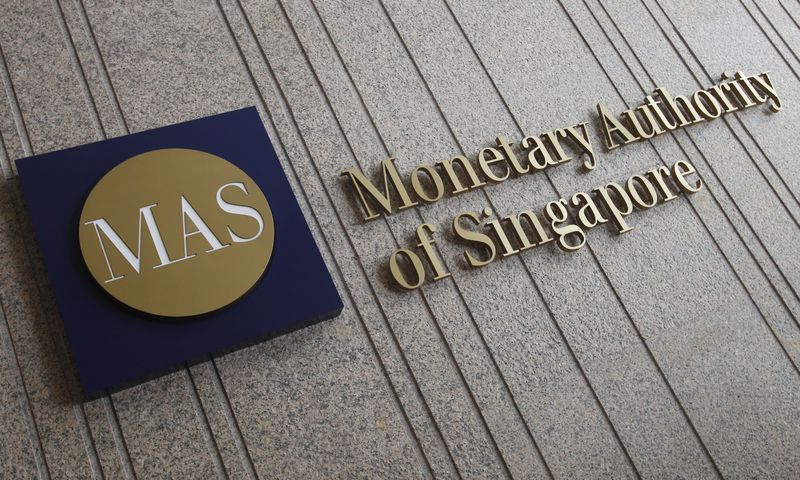By Xinghui Kok
SINGAPORE (Reuters) -Singapore's central bank has a unique method of conducting monetary policy, tweaking the exchange rate of its dollar instead of changing domestic interest rates like most other economies.
The Monetary Authority of Singapore (MAS) sets the path of what it calls the policy band of the Singapore dollar nominal effective exchange rate (S$NEER), thus strengthening or weakening the local currency against those of its main trading partners.
WHY DOES SINGAPORE USE THIS METHOD?
Singapore is a small and trade-reliant economy. Gross exports and imports of goods and services in the city state are more than three times its gross domestic product (GDP). Meanwhile, almost S$0.40 of every dollar spent domestically is on imports.
Given such a setting, the exchange rate has a much stronger influence on inflation than domestic interest rates.
For example, if the Singapore dollar appreciates against currencies of major trading partners, it will reduce prices of imported goods and services. This dampens the prices that households have to pay.
WHAT IS THE S$NEER?
The S$NEER is a combined index made up of bilateral exchange rates between Singapore and its major trading partners.
The index is a trade-weighted exchange rate, where weights are assigned to the various currencies of Singapore's major trading partners based on the importance of the trade relationships.
The central banks says this allows the Singapore dollar to perform collectively in relation to its major trading partners, which is what matters for general price levels in Singapore.
HOW DOES THE S$NEER POLICY BAND WORK?
MAS does not set the precise level of the exchange rate or control it in real time. Instead, the S$NEER is allowed to move up and down within a policy band of which the exact levels are not disclosed. If it goes out of this band, the MAS steps in by buying or selling Singapore dollars.
The policy band has three parameters that the MAS can adjust. These parameters are reviewed at least twice a year, typically in April and October.
Additional reviews can be held if conditions demand an immediate change in settings, such as in 2022 when high inflation triggered two off-cycle moves.
The three policy levers are the slope, the level and the width.
Adjusting the slope will influence the pace at which the Singapore dollar strengthens or weakens.

Adjusting the level, or mid-point, of the policy band allows for an immediate strengthening or weakening of the S$NEER, making this a tool for drastic situations such as a recession.
By widening the policy band, the MAS can allow for more volatility of the S$NEER.